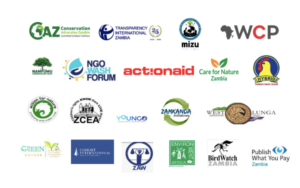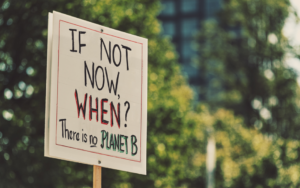The Kafue River Pollution Crisis: A Looming Environmental and Public Health Catastrophe
The Kafue River, one of Zambia’s most critical water sources, is facing an environmental catastrophe. The recent industrial pollution of the river has raised alarms across the country, affecting communities, aquatic life, and agriculture. The crisis, which stems from an acid effluent spill into the Mwambashi River—a tributary of the Kafue—has reignited debates about environmental governance, corporate accountability, and the future of Zambia’s natural resources.
The Incident: How the Kafue River Was Contaminated
On February 18, 2025, Sino Metals Leach Zambia Limited was linked to the discharge of acidic effluent into the Mwambashi River. This tributary feeds into the Kafue River, one of the most vital water bodies in Zambia, supporting millions of people, irrigation schemes, and hydropower projects. The contamination led to devastating environmental consequences, including mass fish deaths and the degradation of surrounding agricultural lands.
Residents who rely on the river for drinking water, fishing, and farming were among the first to notice the signs of pollution. Dead fish were seen floating on the river’s surface, and farmers reported that their crops and livestock were suffering from the contaminated water. The incident immediately sparked outrage, with communities demanding action from both the government and the responsible mining company.
The Government’s Response
In response to the crisis, the Zambian government swiftly mobilized emergency intervention measures. One of the key actions taken was the deployment of the Zambia Air Force (ZAF) to assist in neutralizing the acidic contamination.
For three consecutive days—starting on March 4, 2025—ZAF helicopters conducted aerial spraying of lime over the affected river sections, particularly between Ngabwe and Mumbwa districts. Lime treatment is commonly used to neutralize acidity in water, but concerns remain about whether this measure alone will be sufficient to reverse the damage already inflicted on the river’s ecosystem.
Additionally, the Ministry of Green Economy, in collaboration with environmental agencies, has been monitoring the pollution levels to assess the extent of the damage.
Warnings to the Public: Avoiding Contaminated Fish
Recognizing the potential risks to human health, the Ministry of Fisheries and Livestock has issued a public warning, advising against the consumption of fish from the Kafue River and its affected tributaries. Heavy metals and toxic chemicals from industrial spills can accumulate in fish, posing serious health risks when consumed.
For many local communities, fishing is not just a source of nutrition but also an economic lifeline. The directive to stop fishing has left many families uncertain about their livelihoods. Some have called for government compensation or alternative income-generating projects to support affected households.
The Push for Accountability and Investigation
While emergency response efforts are underway, questions remain about the root cause of the disaster and the broader issue of industrial pollution in Zambia. The government has announced an independent investigation into the pollution incident, focusing on several key areas:
- The environmental impact on aquatic life, ecosystems, and surrounding communities.
- The safety and compliance of mining operations, particularly the integrity of tailings dams and waste disposal methods.
- The responsibilities of Sino Metals Leach Zambia Limited and whether they adhered to environmental regulations.
The government has pledged transparency in the investigation, promising to hold those responsible accountable. However, environmental activists and local communities remain skeptical, citing past cases where industrial polluters were fined but continued operations without implementing meaningful reforms.
The Larger Issue: Industrial Pollution and Zambia’s Environmental Challenges
The Kafue River is no stranger to pollution. Over the years, it has suffered from industrial waste dumping, agricultural runoff, and the effects of climate change. The recent spill is only the latest in a series of environmental threats that highlight the urgent need for stronger regulatory enforcement and corporate accountability.
Several environmental groups have pointed out that Zambia’s mining sector, while crucial to the economy, has often been linked to pollution incidents. Inadequate monitoring, weak enforcement of environmental laws, and a lack of transparency in mining operations have contributed to ongoing environmental degradation.
This crisis presents a critical moment for Zambia to rethink its approach to environmental governance. The public is calling for stronger policies, including:
- Stricter environmental compliance for mining companies. Current penalties for pollution are often seen as insufficient to deter violations. Higher fines and stricter monitoring could ensure greater accountability.
- Better waste management systems. Mining companies should be required to invest in more advanced waste disposal methods to prevent future spills.
- Stronger community engagement. Local communities should have a greater say in environmental oversight, ensuring that their concerns are taken seriously by both companies and regulators.
The Way Forward: Can the Kafue River Recover?
Restoring the Kafue River to its former state will be a long and challenging process. While the government’s efforts to treat the water are a step in the right direction, long-term solutions will require multi-stakeholder cooperation.
Environmentalists are urging for continued water quality monitoring to assess whether the lime treatment is effectively neutralizing the pollutants. There are also calls for increased investment in conservation efforts, such as reforestation along riverbanks to improve water filtration and reduce erosion.
Moreover, holding polluters accountable is essential to ensuring that industries operating along the river take greater responsibility for their environmental impact. Sino Metals Leach Zambia Limited must not only be held liable for damages but also required to contribute to restoration efforts.
A Watershed Moment for Environmental Protection in Zambia
The Kafue River pollution crisis serves as a wake-up call for Zambia. It is a reminder that economic development must go hand in hand with environmental sustainability. Without stronger safeguards, the country risks facing more severe environmental disasters in the future.
The coming weeks will be crucial in determining how the government handles this situation—whether it prioritizes environmental justice or allows business as usual to continue. For the affected communities, the hope is that this crisis will lead to real change, ensuring that the Kafue River remains a source of life, not a symbol of industrial destruction.




